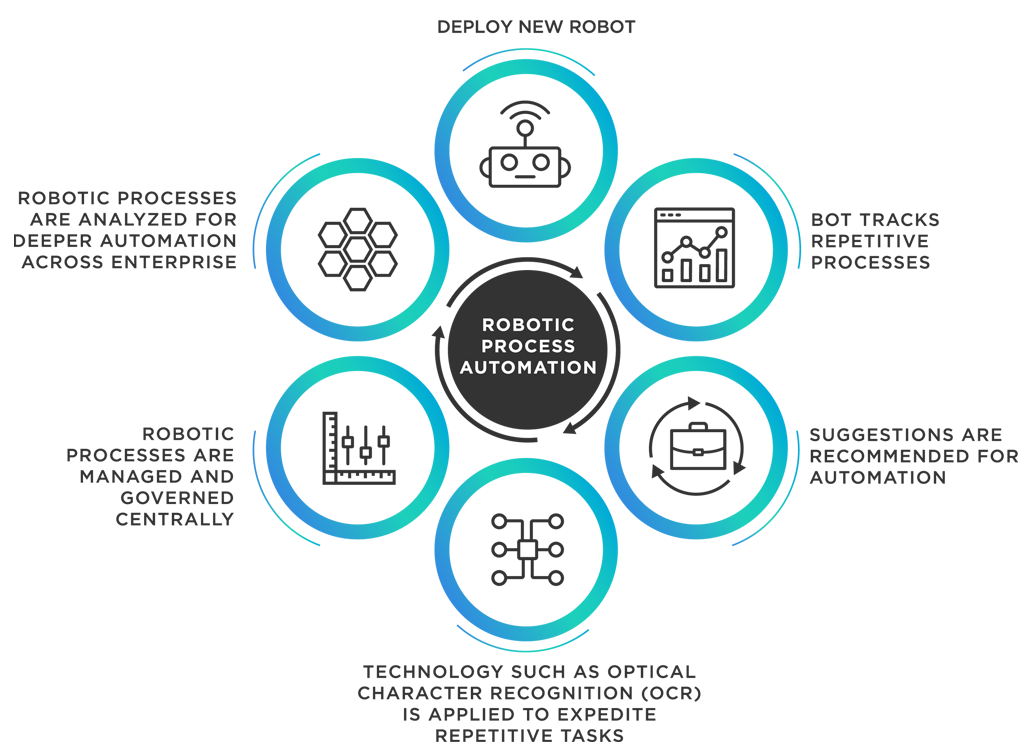RPO
Robotic process automation (RPA) offers several benefits over traditional automation solutions. It enables to save costs and free up resources with a low non-invasive technical barrier. Increased productivity, higher accuracy (and less errors), the ability to streamline regulatory compliance, faster service (and thus enhanced customer satisfaction) and higher consistency are other advantages. Robotic process automation describes both the software which is used to robotize processes as the practice (or process as such) of defining processes and tasks that are best suited for RPA and the strategic approach to effectively design and apply the RPA script, macros and algorithms to the process.
Benefits of RPA
The benefits of RPA are wide-ranging and far-reaching. You can put software robots to work to achieve significant and measurable improvements in areas of your business that range from customer satisfaction and employee engagement through to process speed, accuracy and cost efficiency. The non-exhaustive list of the benefits of RPA include:
- Customer satisfaction : By freeing up your customer-service personnel from forms and tabulations, you’re giving them more time for attentive customer service. The result is an improved customer experience and a much greater ability to meet the requirements of service-level agreements.
- Productivity : Compared with humans, software robots can complete the same tasks about five times faster. They also work 24/7. Work will be getting done more quickly, which creates capacity for more work to get done. Higher productivity can reduce expenses as well as create room for more rapid growth.
- Accuracy : Robots are 100 percent accurate, 100 percent consistent, and 100 percent compliant with policies. The more work you turn over to robots, the fewer clerical errors you experience, and the more time you save that used to be spent correcting those errors. Eliminating the little mistakes humans make can have an enormous culminative impact on your cost base and customer satisfaction levels.
- Resource Utilization : Offloading the mundane tasks to robots frees up your team to handle the tasks that add the most value to your business. What’s more, a robotic workforce is fully scalable, enabling organizations to respond to a spike in demand or a lull. That’s good for customer service and helps ease HR headaches.
- Return On Investment (ROI) : You will start seeing rapid ROI when you switch on your robotic workforce, with operating costs generally dropping quickly. While some IT expenditures will make you wait months or years before ROI shows up, with RPA, you’ll begin seeing ROI in weeks.
- Reduced staffing headaches : There’s nothing easy about staffing, especially in parts of your organization where the demand is uneven, activity levels are unpredictable, and turnover is high. Unlike the human workforce robots can be scaled up and down comparatively easily. They can be deployed quickly and much more cost-effectively. It’s a lot easier to have the right level of staff at the right time.

